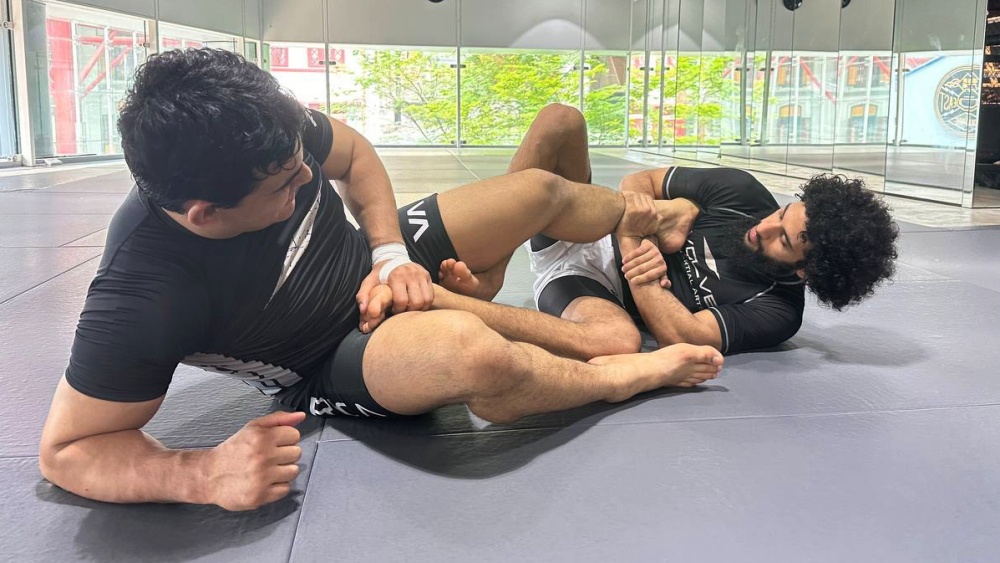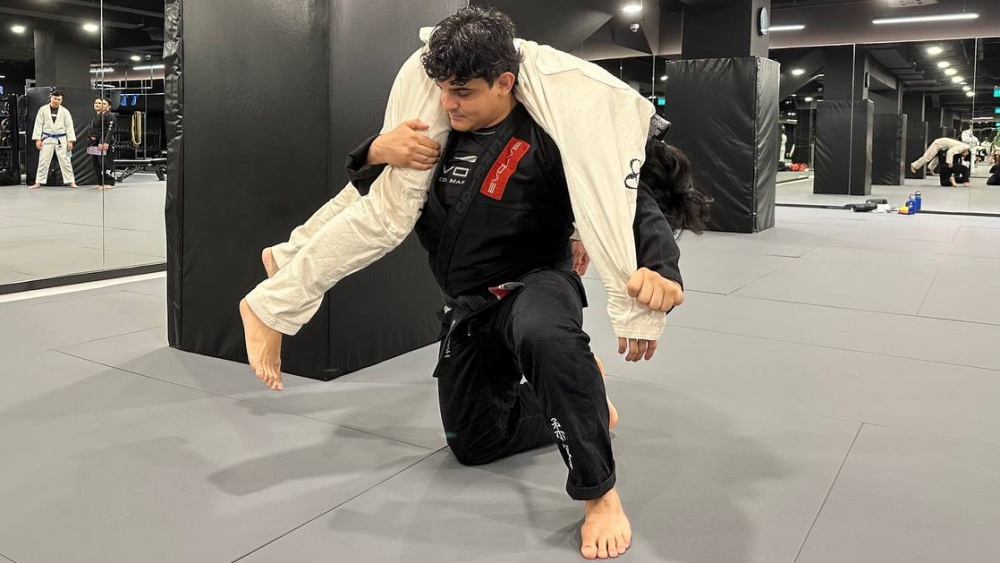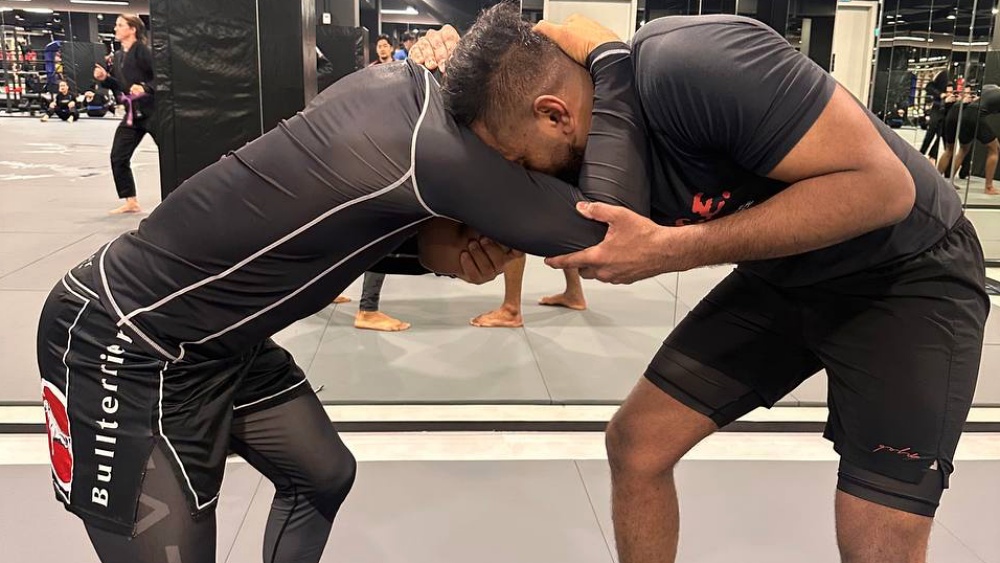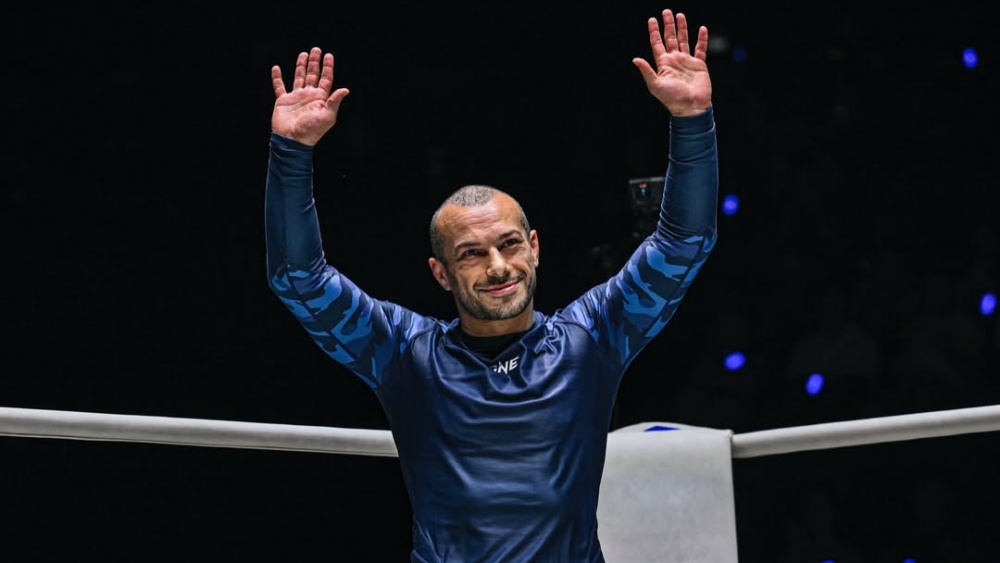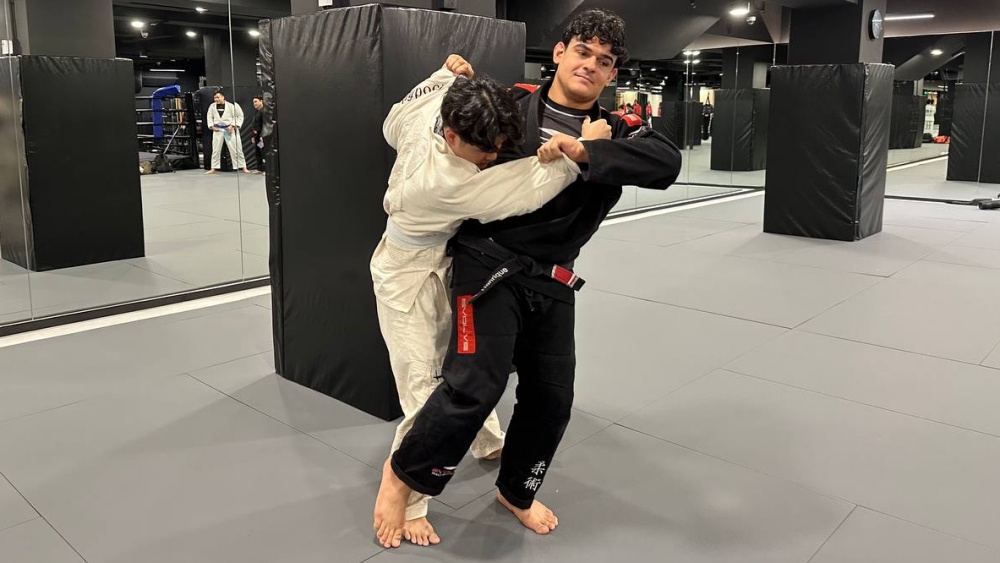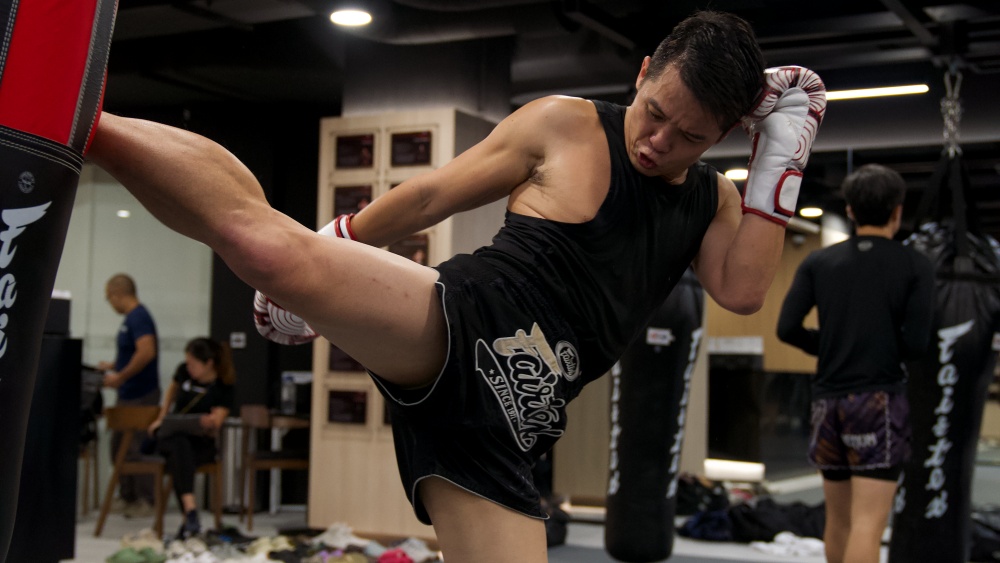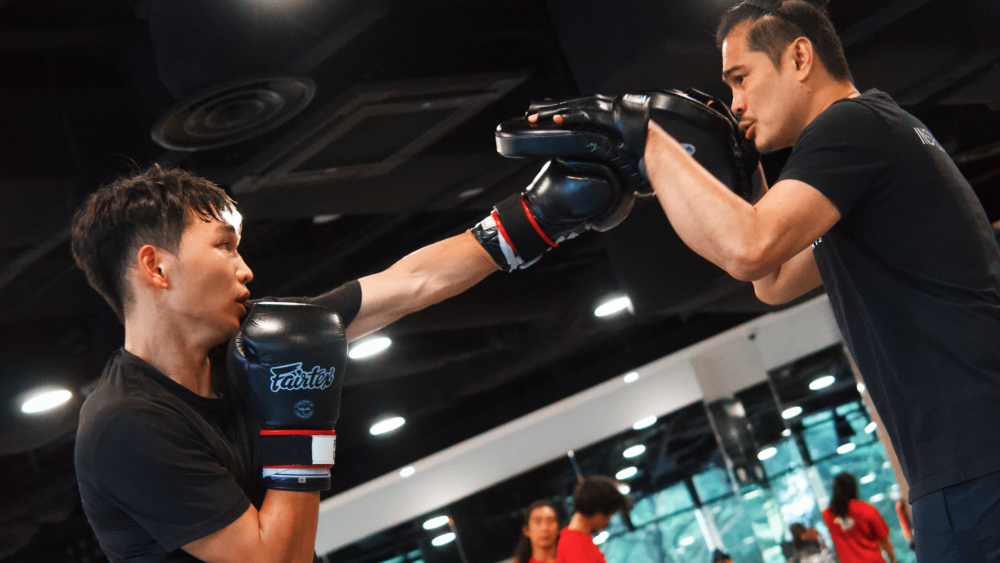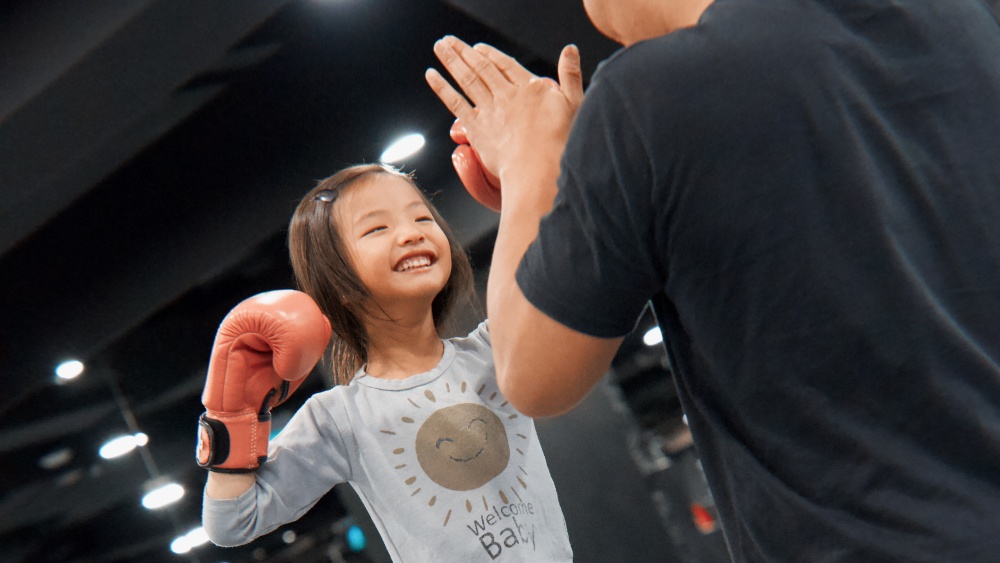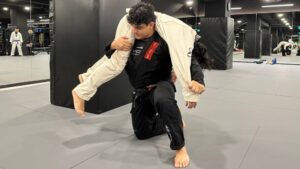In the world of BJJ & MMA , achieving legendary status means reaching a level that only a select few have attained. This can be achieved by your contributions to growing your chosen sport. Like in the case of Japanese MMA legend Shinya Aoki, the technique he developed has spread like wildfire and is pretty much a must-know technique in today’s competition meta. In this article, we will talk about the Aoki Lock, a devastating technique in Brazilian Jiu-Jitsu.
The Aoki Lock Defined
The Aoki lock is a type of foot lock, similar to the inside heel hook. This technique turns the opponent’s foot outward and their heel inward. Putting the opponent’s ankle in an outwardly rotated position, even if a linear force is applied, such as a straight ankle lock, transforms into a twisting ankle and knee lock. The applied rotational and linear pressure creates a powerful tension in the ankle up to the knee of the opponent’s attacked leg.
This unique submission typically targets the opponent’s medial ankle ligaments, mainly when applied with a linear finish. On the other hand, when applied with a rotational finish, this submission will also target the opponent’s knee medially as opposed to a linear finish.
How To Perform The Aoki Lock
The Aoki lock is a twisting version of an ankle lock. This attack works well in today’s No-Gi meta, where most grapplers understand hiding their heel, making it challenging to apply a heel hook. As mentioned earlier, the pressure and the mechanics of the Aoki lock are similar to an inverted heel hook, commonly known as a high percentage and most dangerous type of heel hook in BJJ. While the inverted heel hook is a more accessible variant of the heel hook, getting the heel exposure can be a bit more challenging.
What the Aoki lock does is that you stay with the ankle lock grip and position and expose the heel the same way you would with an inverted heel hook, thus causing similar breaking pressure using a twisting mechanic instead of a stretching mechanic from a traditional ankle lock. While facing the opponent and assuming you’re attacking their right leg, using the shadow hook is essential because you want to create tension, like in the inverted heel hook, to control their right knee on both sides. Using your right leg, apply a shadow hook on the opponent’s right leg, which means your knee is holding the outside of the opponent’s knee, and your foot is controlling the inside of their thigh (about underneath their hamstring), the same as when doing an inverted heel hook.
From this position, extend your hook to pop their heel right into place while holding the opponent’s foot like in a straight ankle lock. Use your chest like a wall that keeps the opponent’s foot from kicking back (booting) through your control. To do this, bring your right elbow inside your hip. Use your other leg as a hook across and outside the opponent’s right glute for total control so that when the opponent tries to boot their leg through, it will be stuck.
Place your right elbow underneath the opponent’s right foot. Doing so forces the opponent’s right foot to bend slightly outward, like a heel exposure. This position allows you to control the opponent’s rotation and knee. Your goal is to be able to pinch the opponent’s knee to put more tension throughout their leg. For the opponent to relieve the pressure, they need to be able to rotate their right knee outward and down. Keep the tension in two directions by flexing your right leg hook with your right knee pointing upward, your right foot pointing outward, and your left leg hooked underneath the glute.
From here, use your left hand to grab your right shoulder while your right-hand grabs your opposite shoulder, similar to a rear naked choke grip. Use your chin to block your left hand, all while trapping the opponent’s right foot. To finish, flex your right hook to fully restrict the opponent’s knee, and drop your left elbow on their right ankle. What you want from this position is to prevent the opponent’s heel from coming out too much. Tighten your grips, fall back a little, and rotate your body towards your far (left) shoulder as you extend your hooks.
Regarding finishing the Aoki lock, some opponents will feel more pressure on the knee, and others down the top of their foot. While both are good, getting pressure on top of the foot is worse as it works its way up to the inside of the knee, like in the inverted heel hook.
On the other hand, when finishing the move in a more common scenario, understand that your shadow hook on the right leg is there to control the opponent’s trapped leg on both sides. You’re pushing in with your hook to expose the heel while your far leg hooks their right glute, and you’re trapping the foot with your arms and upper body to prevent the opponent from booting.
Rather than finishing by rotating towards your far shoulder, finish by falling to your right hip. Remember that it’s all about rotating and restricting the knee. The more the opponent’s knee can turn out, the less pressure there will be on their leg. You can often use your left hand to cup their knee so you don’t lose the opponent’s leg as you extend your shadow hook and lock your grips.
Aoki Lock In Action: When The Student Becomes The Master
Mikey Musumeci competed against Shinya Aoki in ONE Fight Night 15, successfully defeating the Japanese fighter using his trademark submission, the Aoki Lock. He showed excellent technique and, at the end of the match, showed respect for his legendary opponent.
Conclusion
The Aoki lock is a highly effective leg submission that can cause severe damage to your opponents when appropriately done with the correct mechanics. Remember to stay alert and cautious when practicing this technique in training to prevent unnecessary harm to your training partners. Have fun and see how it fits in your offensive and counter-attacking arsenal.
You may also like:
